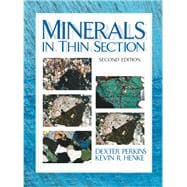
Note: Supplemental materials are not guaranteed with Rental or Used book purchases.
Purchase Benefits
What is included with this book?
Dr. Dexter Perkins received his Ph.D. from the University of Michigan in 1979. He has published over 80 papers and three books. He has had research appointments at the University of Chicago and the Universite Blaise Pascal and has been a regular faculty member in the Department of Geology and Geological Engineering at the University of North Dakota for more than 20 years. His current research is focused on mineral equilibria and science education reform.
Kevin R. Henke received his Ph.D. in geology from the University of North Dakota in 1997. He has had research and postdoctoral appointments at Oak Ridge National Laboratory, in the Chemistry Department at North Dakota State University, and in the Chemistry Department at the University of Kentucky. He has also taught in the Department of Geological Sciences at the University of Kentucky. Currently, he is researching the chemistry and environmental impacts of mercury and other heavy metals as an employee of the Center for Applied Energy Research at the University of Kentucky, Lexington.
I. THEORETICAL CONSIDERATIONS.
II. IDENTIFYING MINERALS IN THIN SECTION.
The New copy of this book will include any supplemental materials advertised. Please check the title of the book to determine if it should include any access cards, study guides, lab manuals, CDs, etc.
The Used, Rental and eBook copies of this book are not guaranteed to include any supplemental materials. Typically, only the book itself is included. This is true even if the title states it includes any access cards, study guides, lab manuals, CDs, etc.